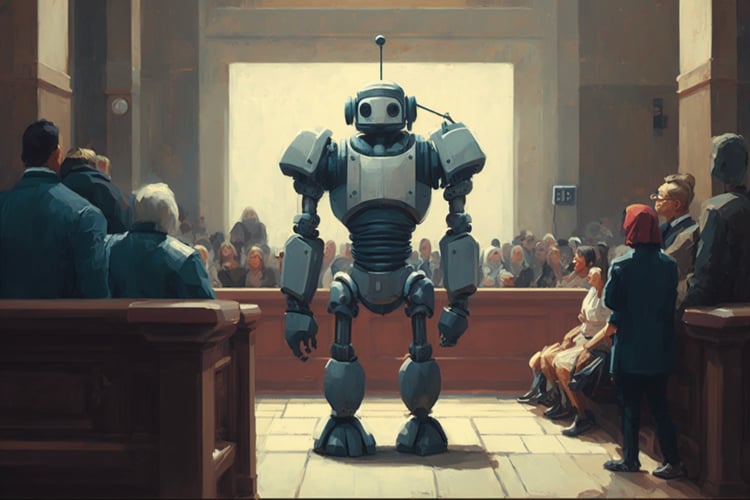Course
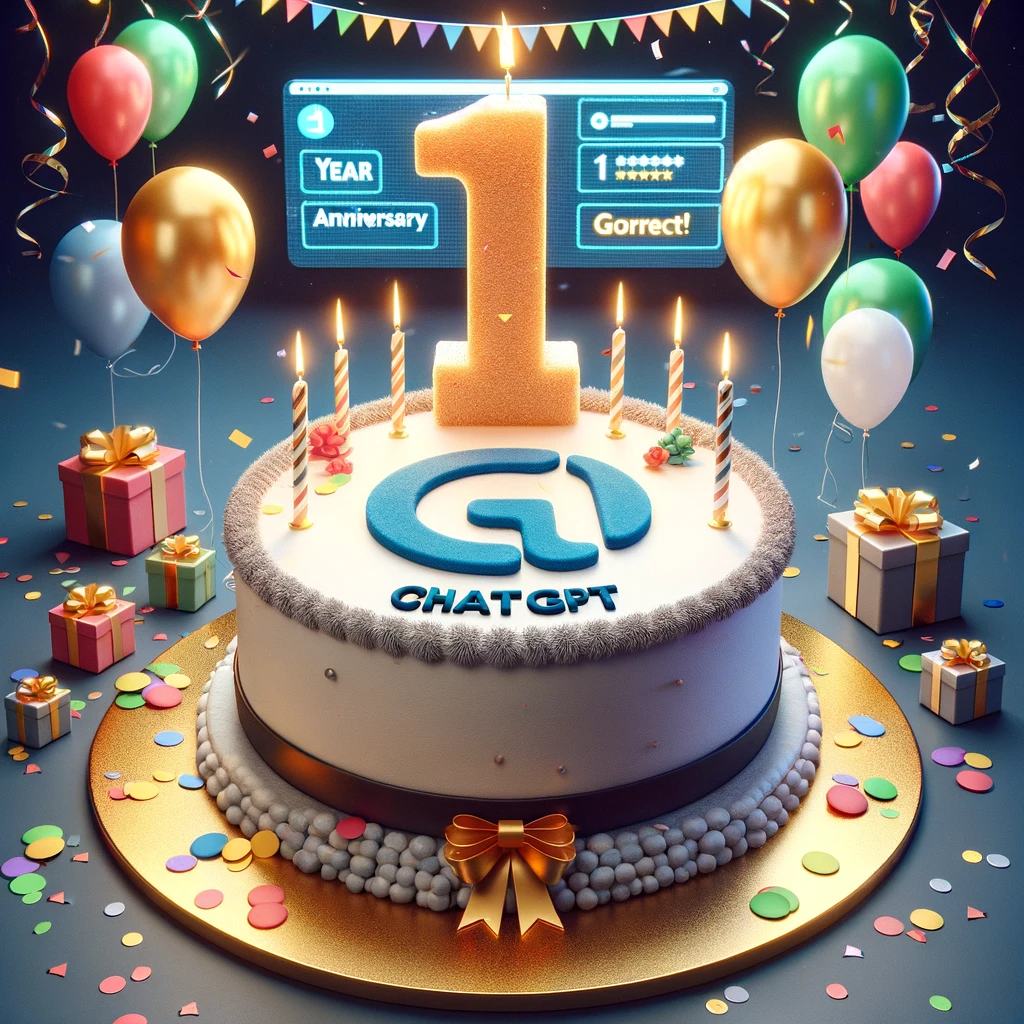
It's been a year since the release of ChatGPT, which DataFramed Guest Dan Jefferies described as a "Neutron Bomb" dropped on the world of AI. Since then, the pace of progress in AI has been unparalleled. This article explores some of the top moments from ChatGPT and generative AI in the past year. Curious to learn more? Check out our Introduction to ChatGPT course today.
1. ChatGPT - The start of revolution
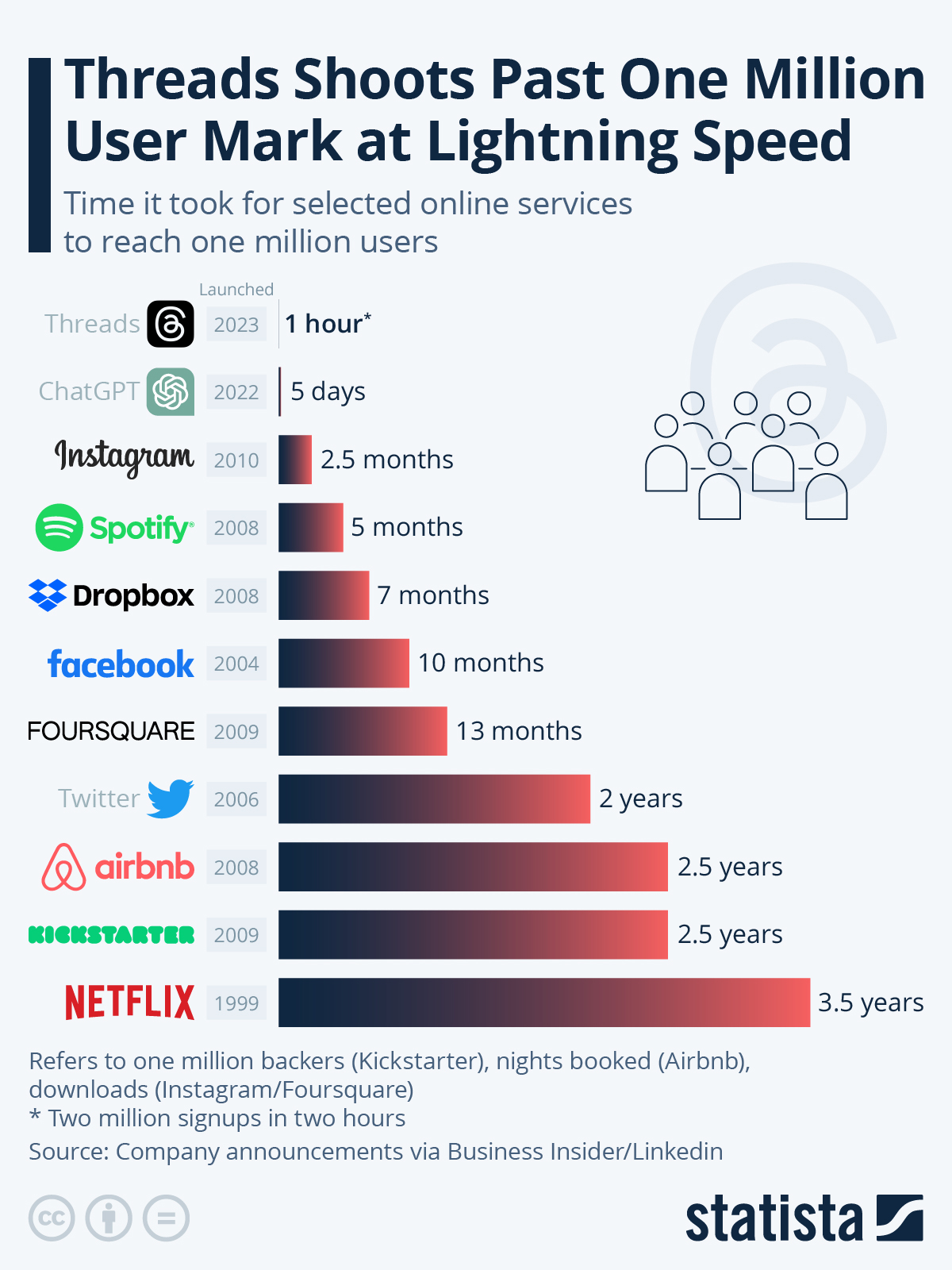
ChatGPT was launched by AI research company OpenAI on November 30, 2022. Within just five days of its release, the chatbot had attracted over one million users, demonstrating the tremendous public interest in this new AI technology.
ChatGPT was built on OpenAI's GPT-3 family of large language models, allowing it to generate human-like text responses to natural language prompts. Users can have conversations with ChatGPT, asking it questions or requesting it to perform certain tasks like summarizing articles, writing code, or composing essays or poems.
The viral popularity of ChatGPT stems from both its impressive language capabilities as well as the fact that it is free and publicly accessible. While other AI models like GPT-3 were previously available only to researchers and developers, the launch of ChatGPT opened up conversational AI to the general public for the first time.
ChatGPT's launch has also sparked debates about the potential dangers of highly advanced AI systems. Critics have pointed out risks like the spread of misinformation given ChatGPT's ability to generate very convincing text. This led to discussions about AI ethics and the need for transparency and oversight in deploying such transformative technologies.
The launch of ChatGPT represents a milestone in making AI accessible. It provides a glimpse of how AI could be integrated into our daily lives in the future, automating rote tasks and enhancing human creativity.
2. Launch of GPT-4 - Improving Performance
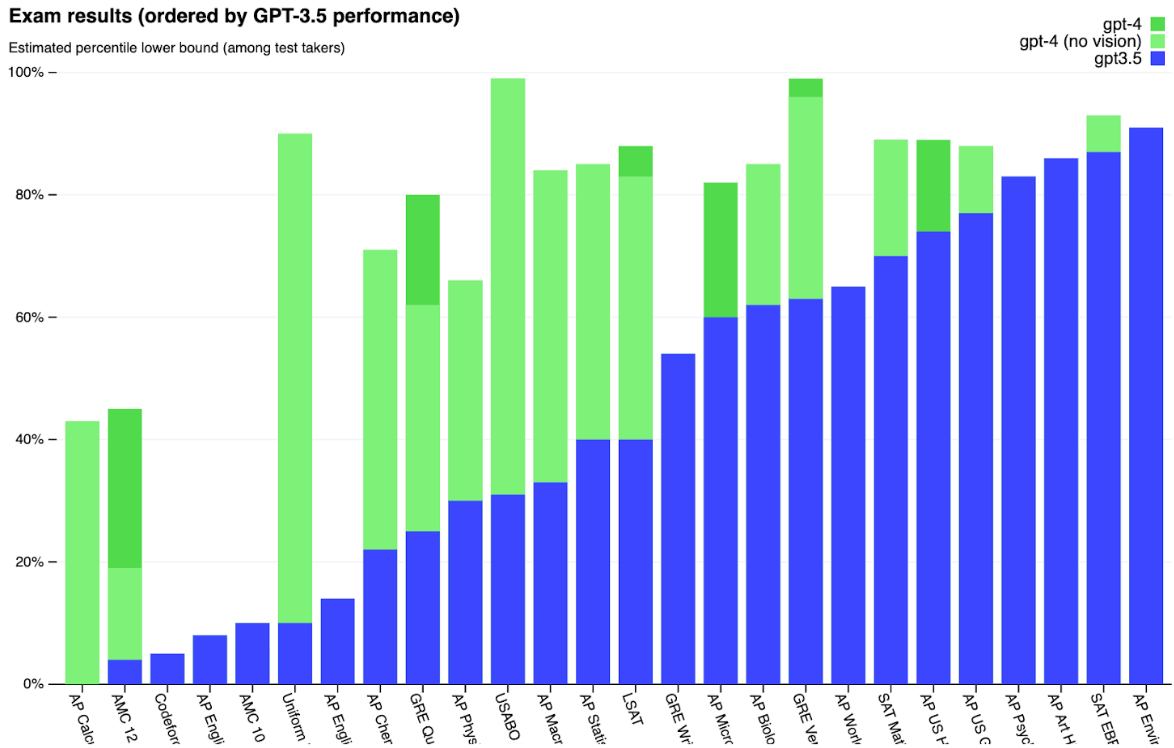
In March 2023, OpenAI unveiled GPT-4, an updated version of its Generative Pre-trained Transformer language model.
GPT-4 demonstrated significant improvements over its predecessor GPT-3, with 1.76 trillion parameters (compared to GPT-3's 175 billion parameters) and 40% better performance on accuracy and hallucination mitigation, according to OpenAI.
GPT-4 can perform many natural language tasks like summarization, translation, essay writing, and answering questions. It can also remember context and perform logical reasoning. The increase in parameters and training data has made GPT-4 one of the most capable generative AI models to date.
3. ChatGPT Plugins - Extra Functionality
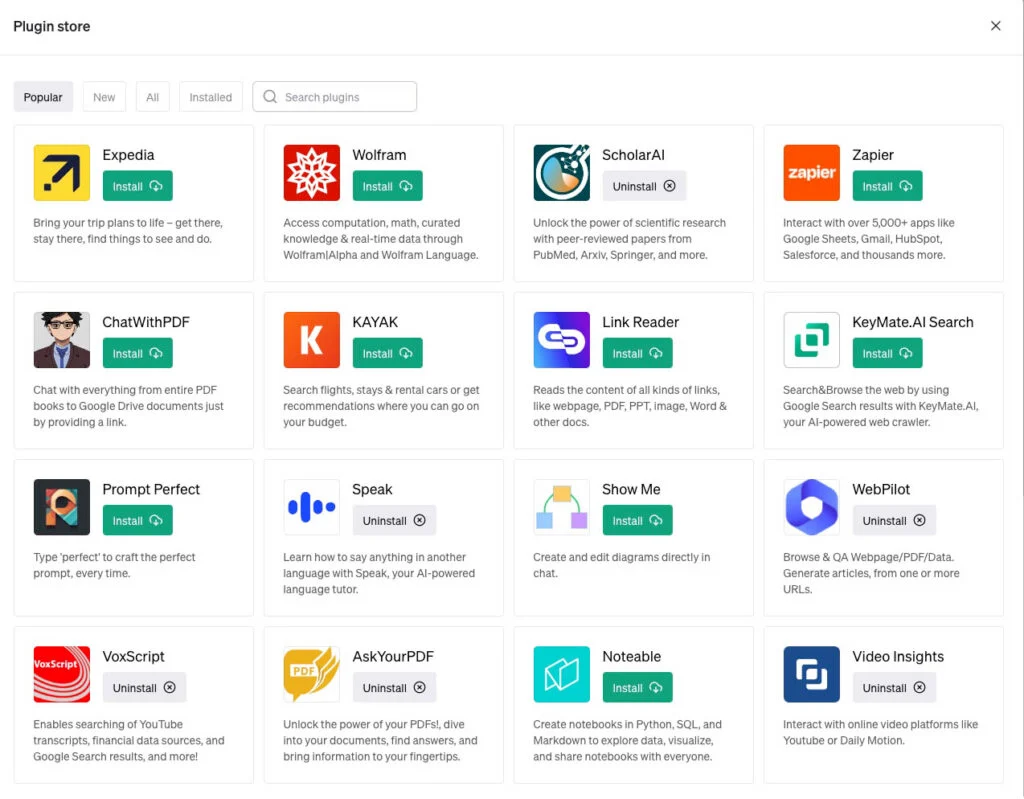
ChatGPT plugins were first introduced in March 2023 for select developers and partners. Plugins allowed ChatGPT to access external information and perform constrained actions like booking flights. Initial plugins were created by companies like Expedia, Slack, and Wolfram.
Over the next months, OpenAI gradually rolled out access to more users. By May 2023, over 200 plugins were available to ChatGPT Plus subscribers. This gave Plus users early access to plugins for entertainment, shopping, travel, and more.
However, plugins were still limited in availability. As we’ll see, with custom GPTs and the ChatGPT Store, there was more to come from OpenAI. In November 2023, OpenAI announced the GPT Store at their first Dev Summit event.
4. Custom Instructions in ChatGPT - Greater Control
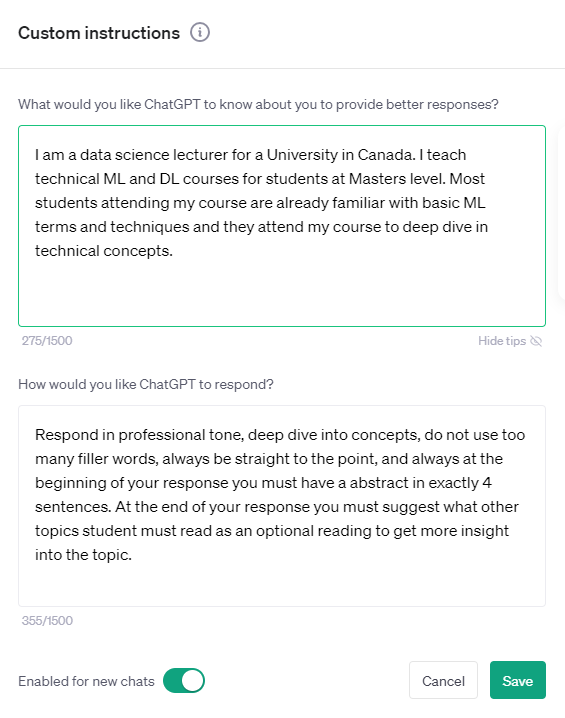
Custom instructions for ChatGPT were first introduced in beta in July 2023 for ChatGPT Plus subscribers only. This allowed Plus users to provide ongoing guidance and preferences to shape ChatGPT's responses across conversations, rather than having to repeat instructions with every prompt.
The feature makes ChatGPT more powerful by incorporating your preferences or specifications that you wish ChatGPT to take into account each time you generate responses.
5. ChatGPT Advanced Data Analysis - Clearer Results
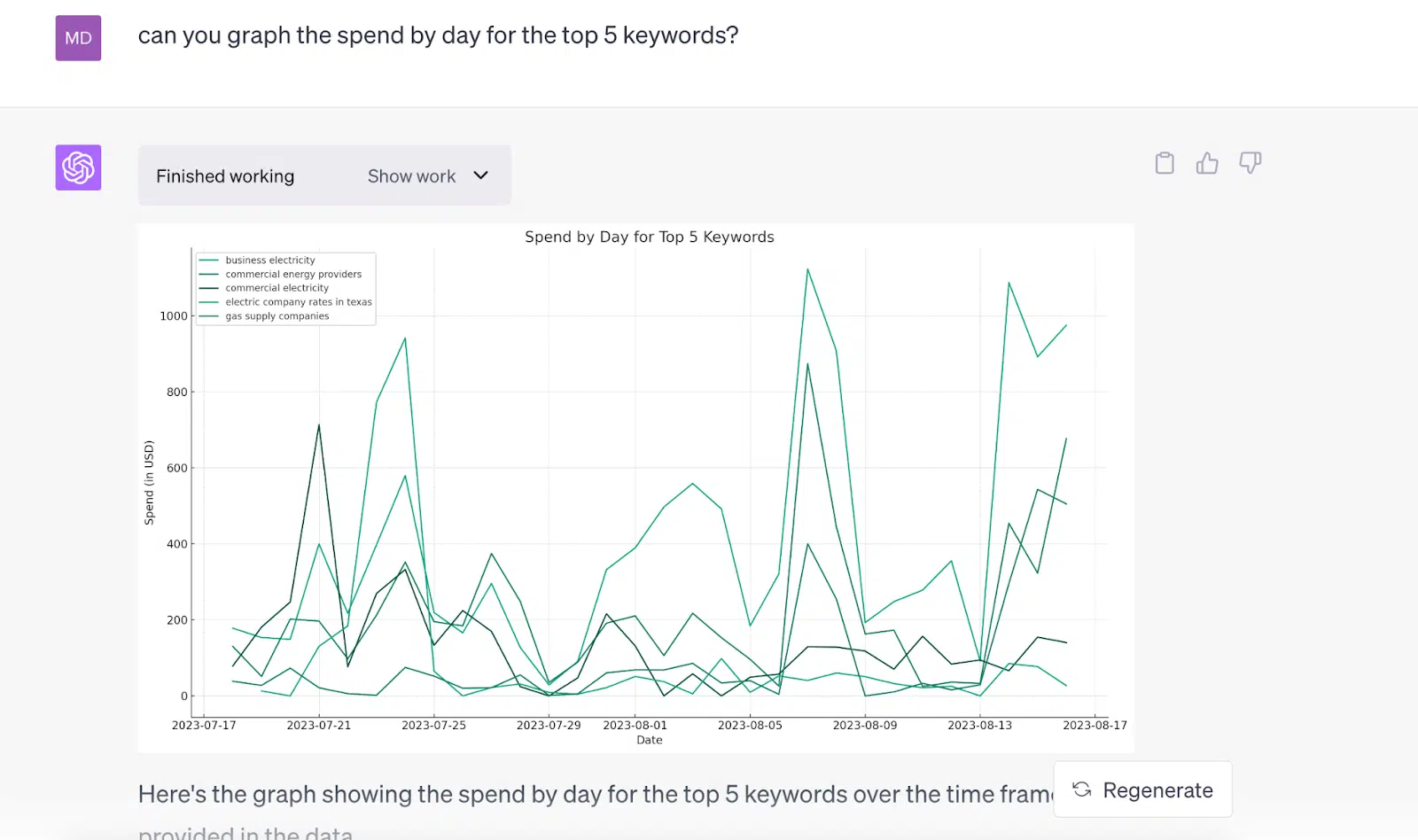
Advanced Data Analysis was introduced in ChatGPT in August 2023 as part of the launch of ChatGPT Enterprise. This built upon the existing Code Interpreter plugin, expanding its capabilities for analyzing data. Advanced Data Analysis enabled both technical and non-technical teams to gain insights from information in seconds.
Over the next couple months, Advanced Data Analysis continued to be available as part of ChatGPT Plus and Enterprise subscriptions. It provided useful data analysis abilities beyond what the free ChatGPT model could do. However, access remained limited.
With the announcement of the GPT Store and custom GPTs, OpenAI essentially democratized what Advanced Data Analysis offered - the power to shape ChatGPT's skills and knowledge.
Data analysis capabilities are now available to all via the GPT Store, not just enterprise subscribers.
6. Launch of DALLE-3 - Moving Towards Multimodal AI
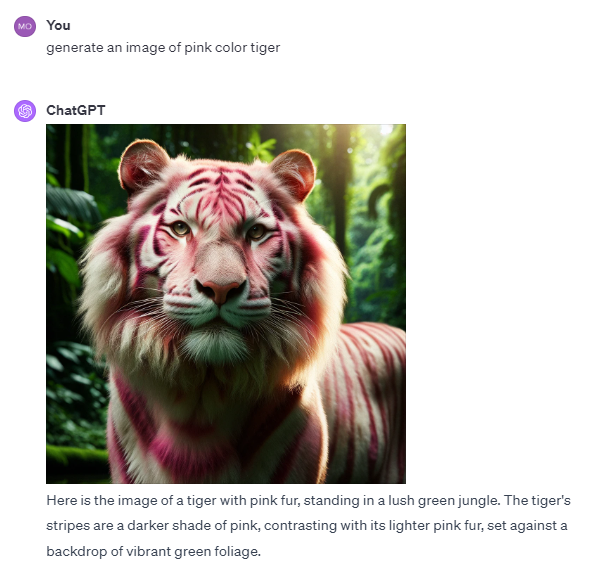
Generated using DALLE-3 in ChatGPT
In October 2023, OpenAI launched DALL-E 3, the latest iteration of its revolutionary AI text-to-image generator. DALL-E 3 represents a major leap forward in generating images that accurately reflect written prompts - a notorious challenge in AI image synthesis.
Compared to previous versions, DALL-E 3 has significantly improved comprehension and adherence to prompt text. It can now handle longer, more detailed prompts without losing context or ignoring key words. This results in images that better match users' intended visions.
DALL-E 3 also introduces higher resolution and more photorealistic outputs.
A standout new capability is integration with ChatGPT, allowing users to simply describe an image idea to the chatbot. ChatGPT will then automatically generate a tailored prompt paragraph to feed to DALL-E 3. Users can iterate by asking ChatGPT to refine the prompt if needed. This simplifies the prompt engineering process.
OpenAI prioritized safety in this release, implementing measures to prevent inappropriate or biased content. DALL-E 3 declines requests to emulate living artists' styles or represent public figures without permission. The company now allows artists to opt out of having their work used to train future iterations.

7. OpenAI’s First-Ever Dev Day - More Advancements
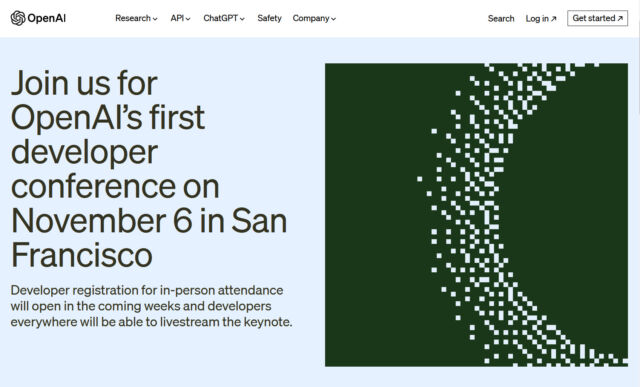
OpenAI's inaugural Dev Day developer conference on November 6, 2023, marked a major milestone for the company. In the keynote, CEO Sam Altman unveiled numerous new AI capabilities, APIs, and products. As we’ll see below, the Dev Day saw the unveiling of GPT-4 Turbo, the Assistants API, custom GPTs, and the GPT Store.
Dev Day underscored OpenAI's commitment to rapidly iterating and expanding access to its AI. The event demonstrated huge leaps in capabilities and flexibility. With improved models, new APIs, and products like the GPT Store, OpenAI is empowering developers and users to mold AI to their unique requirements. The announcements show OpenAI's pole position in steering the AI revolution.
8. GPT-4 Turbo - Improved Performance
GPT-4 Turbo represents the next generation of OpenAI's flagship text-generating AI model GPT-4. Announced at OpenAI's first Dev Day, GPT-4 Turbo offers several improvements over the original GPT-4 released in March 2023.
Most notably, GPT-4 Turbo has been trained on data up to April 2023 rather than just September 2021 for GPT-4. This gives the model more up-to-date knowledge to draw on when responding to prompts. GPT-4 Turbo also supports much larger context sizes, up to 128,000 tokens, allowing it to understand more context and produce more thoughtful responses.
In addition, GPT-4 Turbo has optimized performance and pricing. It costs $0.01 per 1,000 input tokens and $0.03 per 1,000 output tokens, making it significantly more affordable than GPT-4. OpenAI cites 3x cheaper input pricing and 2x cheaper output pricing versus GPT-4.
GPT-4 Turbo is currently available in preview to developers via API access. OpenAI plans a full production release in the coming weeks as the model moves beyond beta. The API preview already enables devs to start integrating and testing GPT-4 Turbo's enhanced capabilities.
9. GPTs - Custom Models
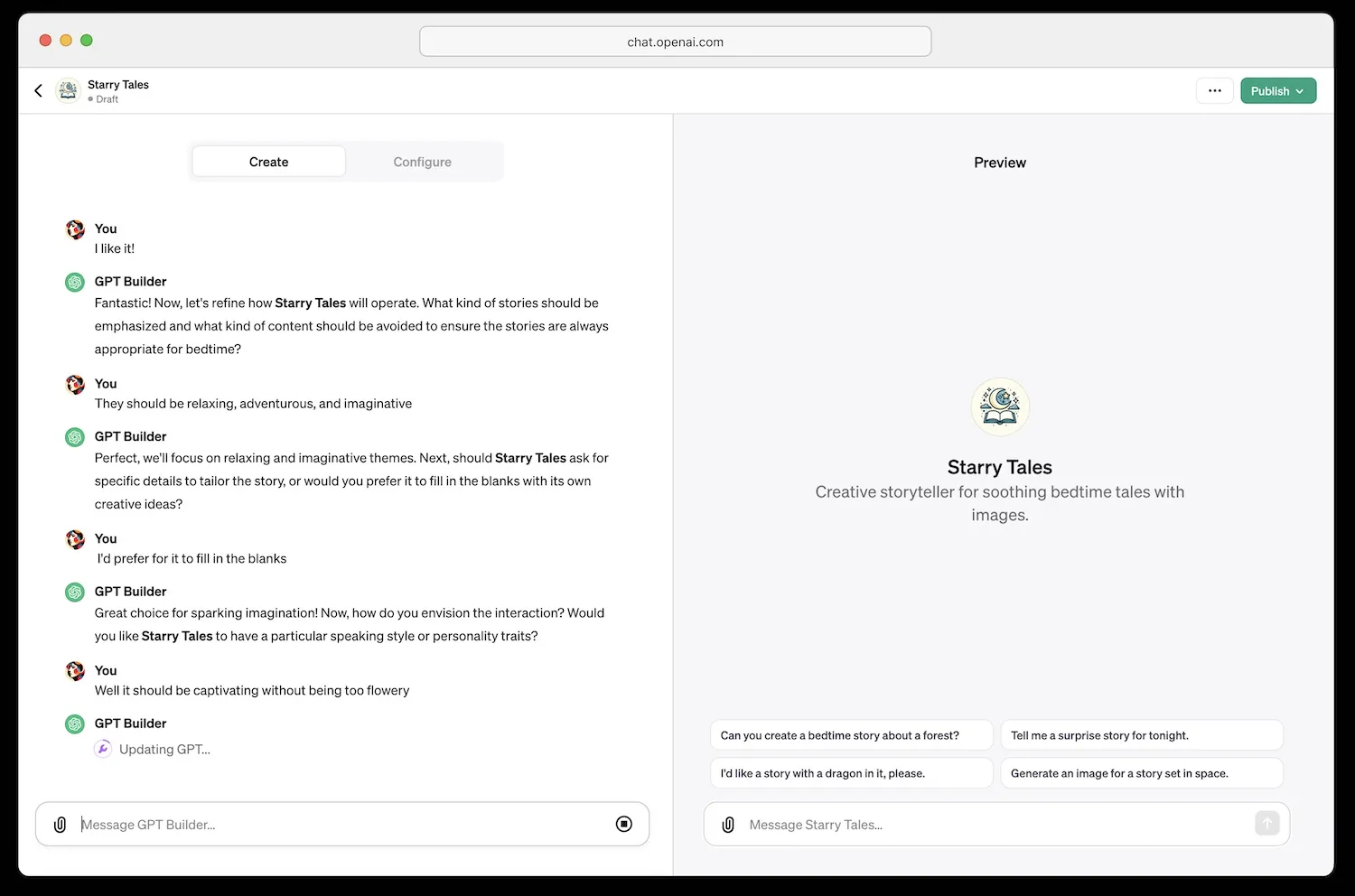
GPTs, or custom AI models, represent a new way for anyone to create tailored versions of ChatGPT for specific use cases without needing to code. As announced at Dev Day, GPTs allow users to combine instructions, knowledge sources, and skills to build customized AI agents.
For example, a teacher could create a GPT focused on math education to help students learn. Or a gaming company may build one that answers questions about a fantasy universe's intricate lore and characters. Essentially, GPTs unlock the ability for regular people to shape ChatGPT's capabilities to their unique needs.
GPTs provide value by specializing ChatGPT's broad knowledge into targeted expertise. They also allow users to correct misinformation, keep knowledge updated, and prevent harmful responses through ongoing guidance. By customizing behavior, GPTs can be more helpful and reliable.
10. GPT Store - Shared Ideas
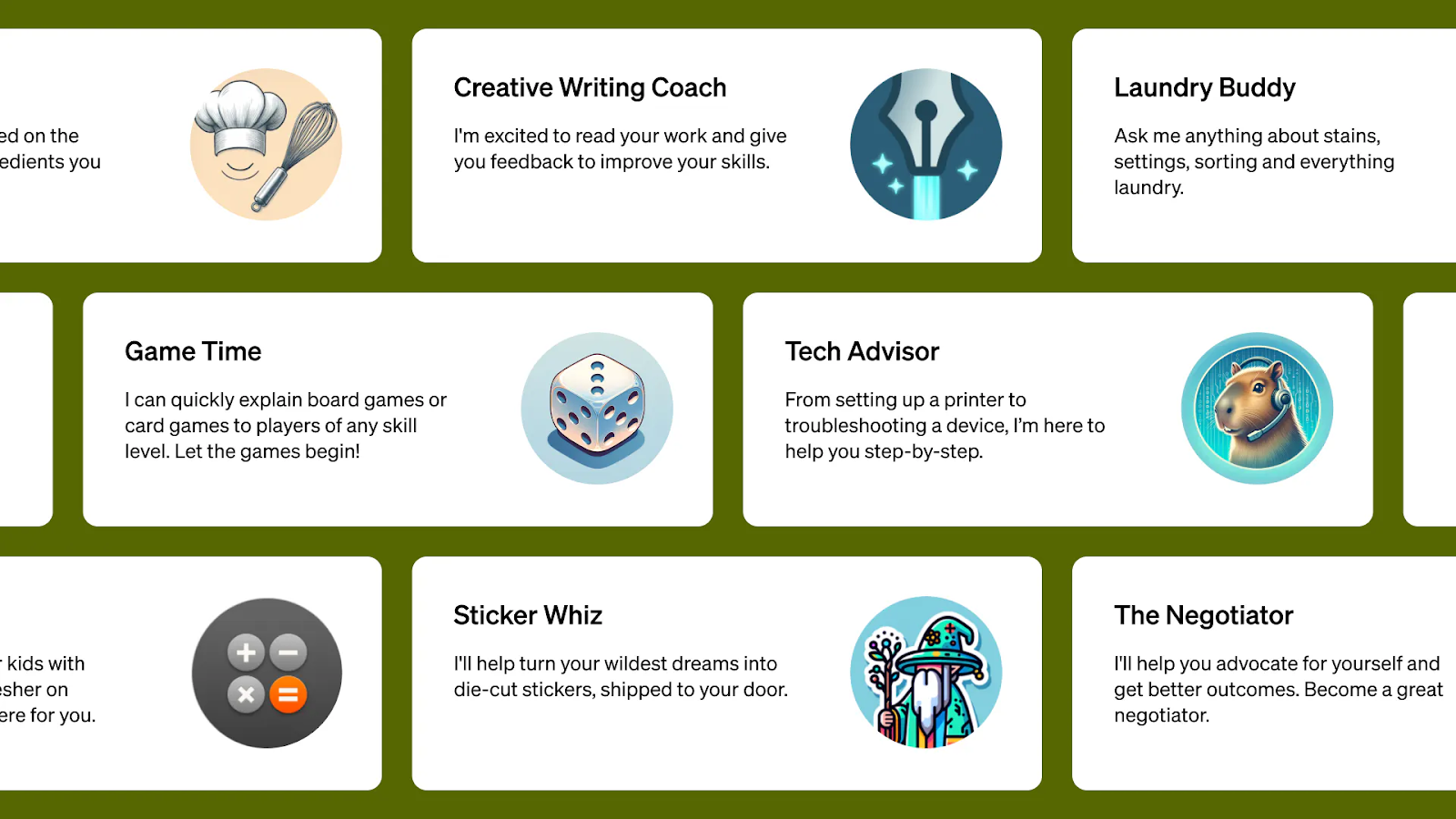
The GPT Store represents a major shift in how people can access and leverage AI technology. It allows anyone to create and distribute customized versions of ChatGPT, called GPTs, for specific use cases without needing to code.
The GPT Store provides a platform to share and potentially monetize these AI creations. Verified builders can publish their GPTs, making them discoverable via search and leaderboards. In the coming months, they will also be able to earn money based on usage.
This parallels the highly successful app store model but for AI models instead of mobile apps. It incentivizes builders to create inventive GPTs that provide value to others. The GPT Store could unlock a wave of creativity in applying AI to specific use cases, similar to how mobile apps have proliferated.
By democratizing access to customizable AI via the GPT Store, OpenAI is enabling an ecosystem and economy around tailored models. This has the potential to rapidly expand ChatGPT's capabilities to new domains based on the innovativeness of creators and builders on the platform.
11. OpenAI Sam Altman's Firing and Rehiring - Inner Turmoil

OpenAI, the company behind the viral AI chatbot ChatGPT, experienced a bizarre executive shakeup involving the firing and rehiring of CEO Sam Altman in the span of just five days. This saga played out like a comedy of errors, with plot twists and reversals worthy of a sitcom episode.
It all started when OpenAI's board abruptly fired Altman on November 17, with no clear explanation given. This move shocked many, considering Altman's status as a co-founder and the recent success of ChatGPT under his leadership. The plot thickened when hundreds of OpenAI employees revolted, threatening to quit if Altman wasn't reinstated.
They argued that Altman was essential to preserving OpenAI's mission of developing AI safely for the benefit of humanity. Sensing an opportunity, Microsoft swooped in to hire Altman to lead a new AI initiative, attempting to poach him and other employees. This power move threatened to gut OpenAI right as ChatGPT was taking off.
In a surprise reversal, OpenAI's board then agreed to bring back Altman as CEO just five days after firing him.
Most of the old board members resigned as part of the deal.
All's well that ends well, it seems, but this saga exposed some major drama behind the scenes. It was a rollercoaster of twists and emotions - confusion, outrage, scheming, relief - worthy of a soap opera.
At the end of the day, Altman emerged triumphant, with his reputation and influence strengthened. However, the power struggles within OpenAI are far from resolved. As they continue to shape the future of AI, this won't be the last plot twist from Silicon Valley's hottest startup.
Developments in the Wider AI Landscape
As well as the meteoric rise of OpenAI and ChatGPT, there have been many significant developments across the generative AI
12. Google Bard launches
In February 2023, Google introduced Bard, their AI chatbot based on the LaMDA and PaLM 2 LLMs. In the wake of ChatGPT’s popularity, Google pushed its own AI, complete with reasoning, coding, and multilingual capabilities. Unlike ChatGPT, Bard pulls its information from the web. You can read our full comparison of ChatGPT vs Bard in a separate article.
13. DataCamp Workspace AI
In June, we launched our own AI Assistant across Workspace and our courses.
As well as helping you write, fix, and repeat your code in Workspace, our AI Assistant can also suggest courses for you to take, what concepts to learn based on skill gaps, and explain technical and conceptual questions.
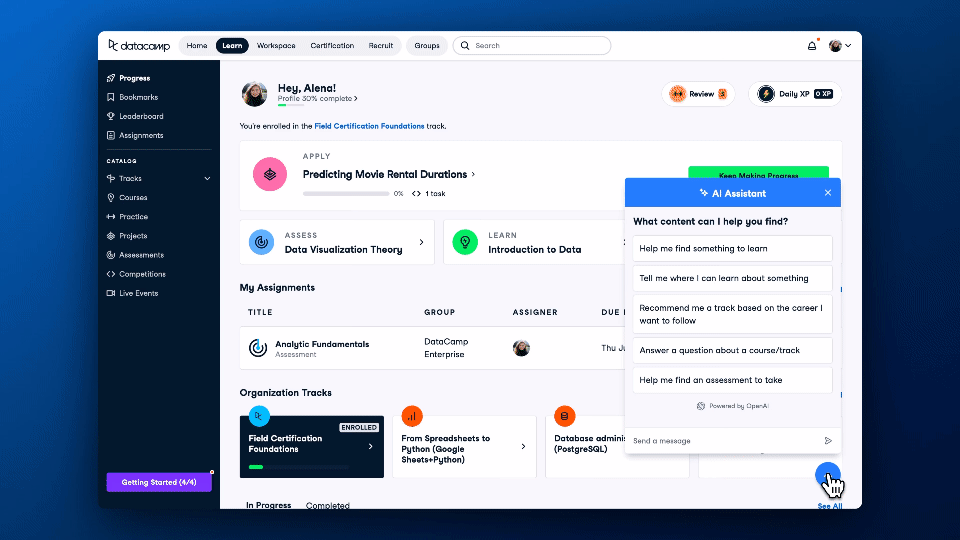
Our AI Assistant at work
The “Generate Code” feature allows you to generate code based on natural language queries, and answer key questions about a dataset. Additionally, the AI Assistant provides intelligent suggestions based on existing code and context, making code writing smarter and more efficient.
14. LLaMA open-source language models
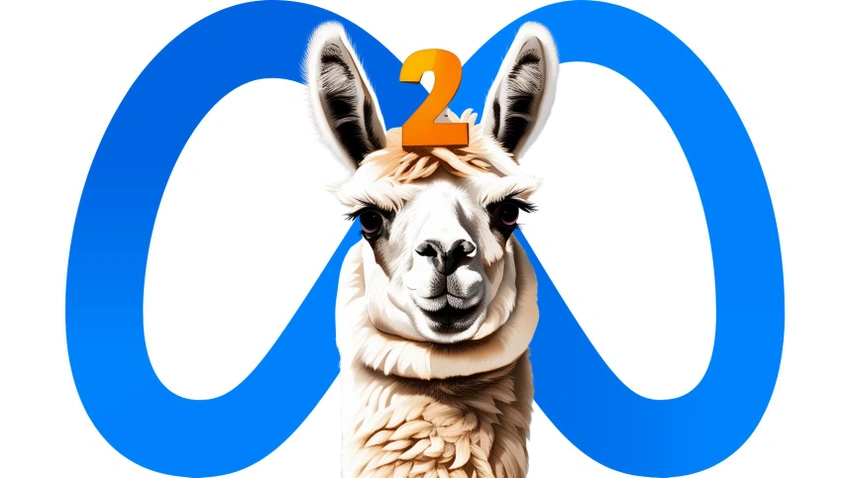
Llama 1 was first introduced in July 2022 as an open-source conversational AI model with 7 billion parameters. It was made available on GitHub and intended for research purposes. Llama 1 demonstrated strong conversational abilities, but its limited size constrained more complex reasoning.
A year later, in July 2023, Meta and Microsoft announced the release of Llama 2, representing the next-generation model with 70 billion parameters. Llama 2 is optimized to run efficiently on Windows and Azure cloud. It also integrates better content filtering for safety. The much larger Llama 2 unlocks more sophisticated reasoning capabilities.
In August 2023, IBM announced plans to make Llama 2 available in its Watson AI platform as well. This will give enterprise users access to Llama 2's enhanced abilities. IBM also suggested that the release of Llama 2 will be followed by its own upcoming models and tools for AI development.
15. Pandas AI
In June 2023, the popular pandas Python library added a range of AI features to boost its capabilities. Pandas AI can summarize pandas data frames data by using natural language. Moreover, you can use it to plot complex visualization, manipulate dataframes, and generate business insights.
It’s a beginner-friendly tool; even a person with little technical background can use it to perform complex data analytics tasks, helping you analyze data faster and derive meaningful conclusions.
16. Mistral 7B open-source language model
Mistral 7B was released in September 2023 by Mistral AI, a French startup based in Paris.
Mistral 7B is an open-source language model that provides impressive performance while maintaining efficiency. With only 7 billion parameters, it outperforms larger proprietary models like Meta's Llama 2 13B on many benchmarks. Mistral's smaller size allows it to be more accessible and flexible for developers and organizations looking to build custom AI applications.
One of Mistral's standout features is its versatility - it excels at both natural language tasks like text generation as well as coding-related tasks. This dual strength makes it uniquely valuable compared to other language models focused solely on natural language.
17. Stable Video Diffusion

Stability AI released the Stable Video Diffusion research preview on November 22, 2022.
Stable Video Diffusion is a new and first video AI model released by Stability AI that can generate short animated videos from static images. It builds on Stability AI's popular Stable Diffusion image generation model and represents the company's first foray into generative video synthesis.
The model comes in two versions - SVD and SVD-XT. SVD can transform images into 14-frame videos while SVD-XT generates 25-frame videos, with both capable of frame rates from 3 to 30 fps. The models were trained on a large dataset of millions of videos before being fine-tuned on hundreds of thousands to around 1 million clips.
Conclusion
In the field of generative AI, the last year has been nothing short of revolutionary, marked by groundbreaking advancements and significant milestones. The launch of ChatGPT set the tone for a year of rapid progress, democratizing access to conversational AI and sparking important conversations about the implications of advanced AI systems. The introduction of GPT-4 later in the year, with its expanded capabilities, further underscored the rapid pace of development in the field.
The integration of DALL-E 3 into this ecosystem brought a new dimension to AI capabilities, enhancing the ability to generate detailed, context-aware images from textual descriptions. This integration not only pushed the boundaries of AI creativity but also highlighted the importance of ethical considerations and safety in AI development.
The year also saw OpenAI navigating internal challenges, with the firing and rehiring of CEO Sam Altman, which highlighted the complexities and dynamics within leading AI organizations.
On the other hand, the rise of the open-source ecosystem for language models, such as LLaMA-2 by Meta, Mistral 7B by Mistral AI, and other open-source LLMs, offers more choices and capabilities to users and developers. This competition is beneficial for consumers as the price of proprietary models like GPT-4 has come down considerably in 2023, and we are looking forward to this trend continuing.
If you’re just starting on your AI journey, our AI Fundamentals skill track will provide actionable knowledge on popular AI topics, such as ChatGPT, LLMs, and generative AI. Get started today and make 2024 your year of AI!



